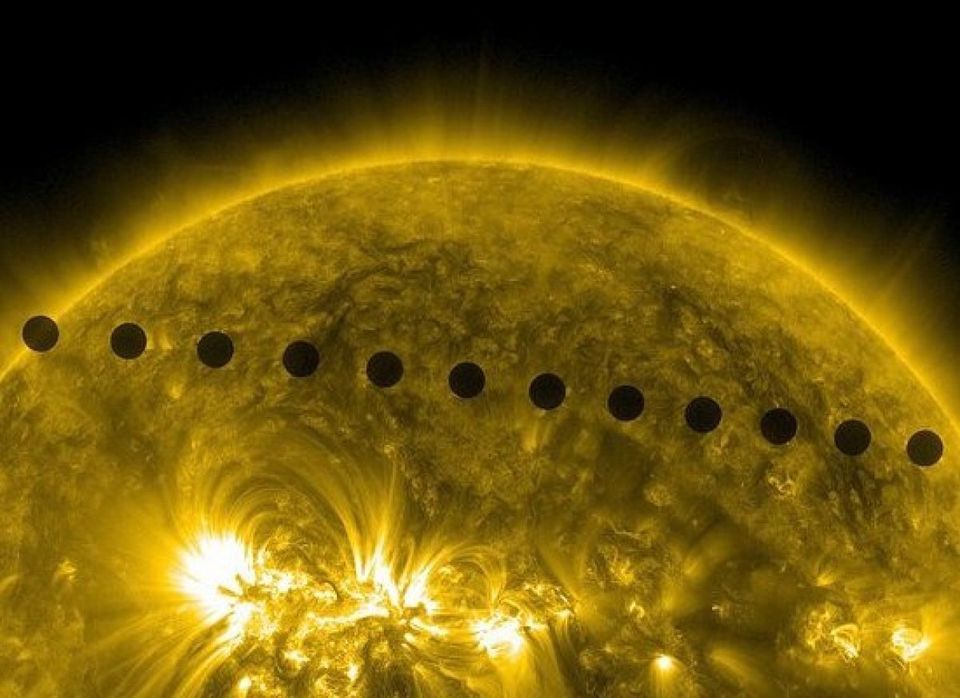Astronomers around the world have watched and recorded the last Transit of Venus for more than a hundred years.
The spectacle of our closest planetary neighbour moving across the face of the sun was captured with wonder and excitement across the globe.
During the transit Venus was visible as a dark disc covering 1/32nd of the sun's surface and blocking out about 1% of its light.
The transit started at 11.04pm on Tuesday, after sunset in the UK. on its website while the Royal Society documented the event with papers and interactive maps.
The planet took a curved path across the northern part of the sun, and reached a half-way point at about 2.30am.
Venus than began to move away from the sun at about 5.37am on Wednesday.
Venus transits occur in repeating pairs. The last was seen in 2004 and the next two will not be until 2117 and 2125. The previous transit to the one in 2004 was on December 6 1882.
For amateur skywatchers viewing projected images of the phenomenon with their telescopes, it was something to marvel at and remember.
But it will also provide valuable data for professional astronomers and planetary scientists studying worlds orbiting distant stars.
Venus transits come in pairs separated by eight years, with more than a century between one pair and the next.
As well as events that are anticipated by amateur and professional astronomers alike, they are also of huge historical significance.
Venus transits in previous centuries allowed scientists to tackle a fundamental astronomical problem: accurately measuring the distance between the earth and the sun.
The first attempt was made by Lancastrian amateur astronomer Jeremiah Horrocks in 1639. Applying triangulation techniques to transit observations, he obtained a crude estimate of the earth-sun distance, known as the astronomical unit (AU). But he was still out by millions of miles.
